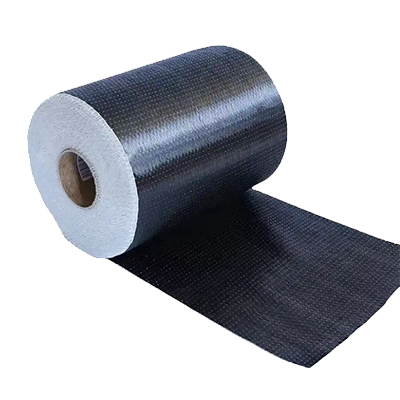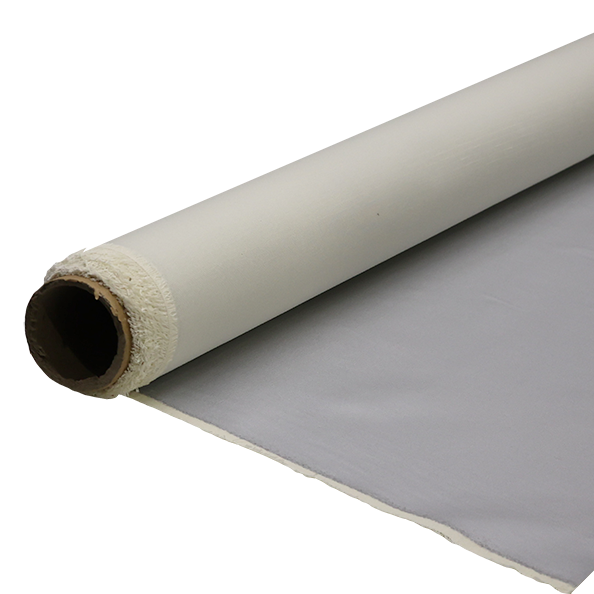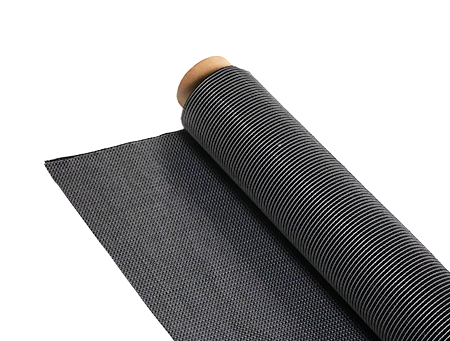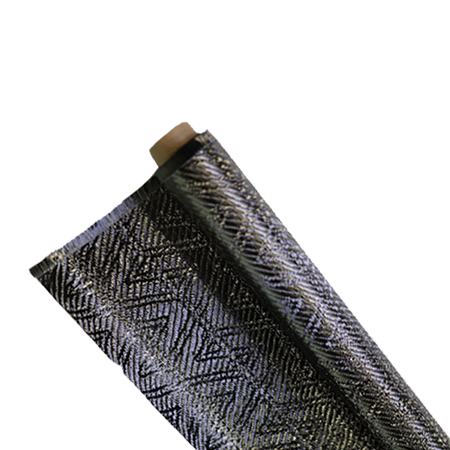Smart Composite Materials with Embedded Sensors Debut
-
Table of Contents
“Revolutionizing Innovation: Smart Composite Materials with Embedded Sensors for a New Era of Performance.”
Smart composite materials with embedded sensors represent a significant advancement in material science, integrating traditional composite structures with advanced sensing technologies. These innovative materials are designed to monitor their own health and performance in real-time, providing critical data on stress, strain, temperature, and other environmental factors. The incorporation of sensors within the composite matrix enhances the material’s functionality, enabling applications in various fields such as aerospace, automotive, civil engineering, and biomedical devices. This debut of smart composites marks a transformative step towards the development of self-sensing, adaptive materials that can improve safety, efficiency, and longevity in numerous applications.
Innovations in Smart Composite Materials
The emergence of smart composite materials with embedded sensors marks a significant advancement in the field of materials science and engineering. These innovative materials are designed to respond dynamically to environmental stimuli, thereby enhancing their functionality and performance across various applications. By integrating sensors directly into composite structures, researchers and engineers are paving the way for a new generation of materials that can monitor their own condition, provide real-time data, and adapt to changing conditions.
One of the most compelling aspects of smart composite materials is their ability to detect and respond to mechanical stress, temperature fluctuations, and other environmental factors. This capability is largely attributed to the incorporation of advanced sensing technologies, such as piezoelectric sensors, fiber optic sensors, and conductive polymers. These sensors can provide critical information about the structural integrity of the material, allowing for proactive maintenance and reducing the risk of catastrophic failures. For instance, in aerospace applications, where weight and reliability are paramount, smart composites can monitor stress levels during flight, enabling timely interventions that enhance safety and performance.
Moreover, the integration of sensors into composite materials facilitates the development of self-healing capabilities. Researchers are exploring the use of microcapsules containing healing agents that can be released when the material experiences damage. This self-repair mechanism not only extends the lifespan of the material but also reduces maintenance costs and downtime. As a result, industries such as automotive and construction are increasingly interested in these smart composites, as they promise to improve durability and reduce the need for frequent repairs.
In addition to their structural applications, smart composite materials are also making strides in the field of healthcare. For example, researchers are developing biocompatible smart composites that can be used in medical devices and implants. These materials can monitor physiological parameters, such as temperature and pressure, providing valuable data for patient care. Furthermore, the ability to embed sensors within these materials allows for the creation of personalized medical solutions that can adapt to individual patient needs, thereby enhancing treatment outcomes.
Transitioning from healthcare to environmental applications, smart composite materials are also being utilized in the development of advanced sensors for monitoring environmental conditions. These materials can be deployed in various settings, such as bridges, dams, and pipelines, to provide continuous monitoring of structural health and environmental impact. By collecting data on factors such as moisture levels, temperature changes, and chemical exposure, these smart composites can help prevent environmental disasters and ensure the longevity of critical infrastructure.
As the demand for sustainable and efficient materials continues to grow, the development of smart composite materials with embedded sensors is becoming increasingly relevant. These materials not only offer enhanced performance but also contribute to sustainability efforts by reducing waste and energy consumption. For instance, by enabling predictive maintenance, smart composites can minimize the need for resource-intensive repairs and replacements.
In conclusion, the debut of smart composite materials with embedded sensors represents a transformative shift in material science, with far-reaching implications across various industries. Their ability to monitor and respond to environmental changes enhances safety, durability, and efficiency, while also paving the way for innovative applications in healthcare and environmental monitoring. As research and development in this field continue to advance, it is likely that we will see even more sophisticated smart composites that further revolutionize the way we approach material design and application.
Applications of Embedded Sensors in Aerospace

The integration of embedded sensors into smart composite materials marks a significant advancement in aerospace technology, offering a myriad of applications that enhance the performance, safety, and efficiency of aircraft. As the aerospace industry continues to evolve, the demand for lightweight yet durable materials has led to the development of composite materials that not only reduce weight but also incorporate advanced sensing capabilities. These embedded sensors play a crucial role in monitoring the structural integrity of aircraft, thereby ensuring operational safety and reliability.
One of the primary applications of embedded sensors in aerospace is structural health monitoring (SHM). By embedding sensors within composite materials, engineers can continuously assess the condition of critical components such as wings, fuselage, and tail structures. These sensors can detect stress, strain, and potential damage in real-time, allowing for proactive maintenance and reducing the risk of catastrophic failures. For instance, if a sensor identifies unusual stress patterns during flight, maintenance crews can be alerted to inspect the affected area before it leads to more significant issues. This capability not only enhances safety but also optimizes maintenance schedules, ultimately reducing operational costs.
Moreover, the use of embedded sensors facilitates the collection of valuable data that can be analyzed to improve aircraft design and performance. By monitoring various parameters such as temperature, pressure, and vibration, engineers can gain insights into how aircraft behave under different conditions. This data-driven approach enables the refinement of design processes, leading to more efficient and resilient aircraft. For example, understanding how materials respond to specific flight conditions can inform future composite material development, resulting in lighter and stronger structures that meet the rigorous demands of modern aviation.
In addition to structural monitoring, embedded sensors also play a vital role in enhancing the overall operational efficiency of aircraft. By integrating sensors into the composite materials of wings and control surfaces, engineers can develop adaptive systems that respond to changing aerodynamic conditions. These smart materials can adjust their shape or stiffness in real-time, optimizing performance and fuel efficiency. Such innovations not only improve the aircraft’s aerodynamic properties but also contribute to reduced fuel consumption, aligning with the industry’s push towards sustainability.
Furthermore, the integration of embedded sensors extends beyond traditional aircraft to include unmanned aerial vehicles (UAVs) and advanced air mobility solutions. As these platforms become increasingly prevalent, the need for reliable monitoring systems becomes paramount. Embedded sensors in UAVs can provide critical data on flight dynamics, environmental conditions, and system performance, ensuring safe and efficient operations. This capability is particularly important in applications such as cargo delivery, surveillance, and search and rescue missions, where reliability and precision are essential.
As the aerospace industry continues to embrace smart composite materials with embedded sensors, the potential for innovation is vast. The ongoing research and development in this field promise to yield even more sophisticated applications, further enhancing the safety, efficiency, and sustainability of air travel. In conclusion, the deployment of embedded sensors within composite materials represents a transformative leap in aerospace technology, paving the way for smarter, safer, and more efficient aircraft. As these technologies mature, they will undoubtedly play a pivotal role in shaping the future of aviation, ensuring that the industry meets the challenges of tomorrow while maintaining the highest standards of safety and performance.
Future Trends in Smart Materials Technology
The emergence of smart composite materials with embedded sensors marks a significant advancement in the field of materials science, paving the way for innovative applications across various industries. As technology continues to evolve, the integration of sensors into composite materials is poised to revolutionize how we monitor and interact with structures and systems. This trend is driven by the increasing demand for materials that not only possess superior mechanical properties but also provide real-time data about their condition and performance.
One of the most compelling aspects of smart composite materials is their ability to enhance structural integrity and safety. By embedding sensors within the composite matrix, engineers can monitor stress, strain, temperature, and other critical parameters in real time. This capability allows for proactive maintenance and timely interventions, significantly reducing the risk of catastrophic failures in structures such as bridges, buildings, and aircraft. For instance, in aerospace applications, the ability to detect micro-cracks or delaminations early can lead to substantial cost savings and improved safety for passengers and cargo.
Moreover, the integration of sensors into composite materials facilitates the development of self-healing capabilities. Researchers are exploring the incorporation of microcapsules containing healing agents within the composite matrix. When damage occurs, these microcapsules can rupture, releasing the healing agents to repair the material autonomously. This innovative approach not only extends the lifespan of the materials but also enhances their reliability, making them particularly attractive for use in critical applications where failure is not an option.
In addition to structural applications, smart composite materials with embedded sensors are gaining traction in the field of healthcare. Wearable devices that monitor physiological parameters, such as heart rate and temperature, are increasingly being developed using these advanced materials. The flexibility and lightweight nature of composites make them ideal for creating comfortable and unobtrusive wearable technology. As a result, patients can benefit from continuous health monitoring, leading to improved outcomes and more personalized medical care.
Furthermore, the automotive industry is also embracing smart composite materials. With the push for lighter and more fuel-efficient vehicles, manufacturers are turning to composites that incorporate sensors to monitor vehicle performance and driver behavior. These materials can provide valuable insights into vehicle dynamics, enabling manufacturers to optimize designs and enhance safety features. For example, real-time data on tire pressure and temperature can help prevent blowouts and improve fuel efficiency, ultimately contributing to a more sustainable transportation system.
As we look to the future, the potential applications of smart composite materials with embedded sensors are virtually limitless. The ongoing research and development in this field are expected to yield even more sophisticated materials that can adapt to their environment and respond to external stimuli. This adaptability will not only enhance the functionality of the materials but also open new avenues for innovation across various sectors, including construction, aerospace, healthcare, and automotive.
In conclusion, the debut of smart composite materials with embedded sensors signifies a transformative shift in materials technology. By combining advanced sensing capabilities with the inherent advantages of composite materials, these innovations are set to redefine how we approach design, maintenance, and safety in numerous applications. As the technology matures, we can anticipate a future where smart materials play an integral role in creating safer, more efficient, and more responsive systems that enhance our daily lives.
Q&A
1. **What are smart composite materials with embedded sensors?**
Smart composite materials with embedded sensors are advanced materials that integrate sensing technologies within their structure, allowing them to monitor and respond to environmental changes, such as stress, temperature, and strain.
2. **What are the applications of smart composite materials with embedded sensors?**
These materials are used in various applications, including aerospace, automotive, civil engineering, and healthcare, where real-time monitoring of structural integrity and performance is critical.
3. **What are the benefits of using smart composite materials with embedded sensors?**
The benefits include enhanced durability, improved safety through real-time monitoring, reduced maintenance costs, and the ability to gather data for better decision-making in design and operational processes.Smart composite materials with embedded sensors represent a significant advancement in material science, enabling real-time monitoring and enhanced performance in various applications. These materials can respond to environmental changes, providing valuable data for structural health monitoring, aerospace, automotive, and civil engineering sectors. The integration of sensors within composites allows for improved safety, efficiency, and longevity of structures, paving the way for innovative designs and smarter infrastructure. As technology continues to evolve, the potential for smart composites to revolutionize industries and contribute to sustainable development becomes increasingly promising.











